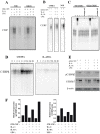Role of the p38 MAPK/C/EBPβ Pathway in the Regulation of Phenotype and IL-10 and IL-12 Production by Tolerogenic Bone Marrow-Derived Dendritic Cells
- PMID: 30544623
- PMCID: PMC6316502
- DOI: 10.3390/cells7120256
Role of the p38 MAPK/C/EBPβ Pathway in the Regulation of Phenotype and IL-10 and IL-12 Production by Tolerogenic Bone Marrow-Derived Dendritic Cells
Abstract
Dendritic cells (DCs) play a major role in innate and adaptive immunity and self-immune tolerance. Immunogenic versus tolerogenic DC functions are dictated by their levels of costimulatory molecules and their cytokine expression profile. The transcription factor C/EBPβ regulates the expression of several inflammatory genes in many cell types including macrophages. However, little is known regarding the role of C/EBPβ in tolerogenic versus immunogenic DCs functions. We have previously reported that bone marrow-derived DCs generated with GM-CSF (GM/DCs) acquire the signature of semi-mature tolerogenic IL-10-producing DCs as opposed to immunogenic DCs generated with GM-CSF and IL-4 (IL-4/DCs). Here, we show that tolerogenic GM/DCs exhibit higher levels of phosphorylation and enhanced DNA binding activity of C/EBPβ and CREB than immunogenic IL-4/DCs. We also show that the p38 MAPK/CREB axis and GSK3 play an important role in regulating C/EBPβ phosphorylation and DNA binding activity. Inhibition of p38 MAPK in GM/DCs resulted in a drastic decrease of C/EBPβ and CREB DNA binding activities, a reduction of their IL-10 production and an increase of their IL-12p70 production, a characteristic of immunogenic IL-4/DCs. We also present evidence that GSK3 inhibition in GM/DCs reduced C/EBPβ DNA binding activity and increased expression of costimulatory molecules in GM/DCs and their production of IL-10. Analysis of GM/DCs of C/EBPβ-/- mice showed that C/EBPβ was essential to maintain the semimature phenotype and the production of IL-10 as well as low CD4⁺ T cell proliferation. Our results highlight the importance of the p38MAPK-C/EBPβ pathway in regulating phenotype and function of tolerogenic GM/DCs.
Keywords: CCAAT/enhancer-binding protein beta (C/EBPβ); IL-12); Interleukins 10 and 12 (IL-10; tolerogenic bone marrow-derived dendritic cells (BMDCs).
Conflict of interest statement
The authors declare no conflict of interest.
Figures







References
-
- Besin G., Gaudreau S., Menard M., Guindi C., Dupuis G., Amrani A. Thymic stromal lymphopoietin and thymic stromal lymphopoietin-conditioned dendritic cells induce regulatory T-cell differentiation and protection of NOD mice against diabetes. Diabetes. 2008;57:2107–2117. doi: 10.2337/db08-0171. - DOI - PMC - PubMed
Grants and funding
LinkOut - more resources
Full Text Sources
Research Materials

